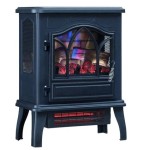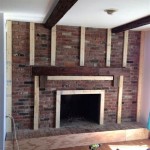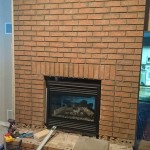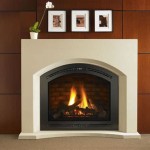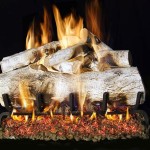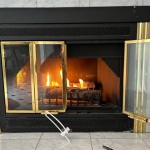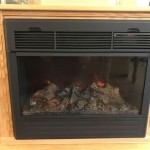Ventless Gas Log Fireplace Odor: Causes, Solutions, and Prevention
Ventless gas log fireplaces offer a convenient and efficient way to add warmth and ambiance to a home without the need for a traditional chimney. However, one common concern associated with these systems is the occurrence of unpleasant odors. Understanding the potential causes of these smells, along with effective solutions and preventative measures, is crucial for maintaining a comfortable and safe home environment. This article will explore the various factors contributing to ventless gas log fireplace odor, focusing on practical approaches to mitigate and eliminate these issues.
Ventless gas log fireplaces operate by burning natural gas or propane fuel within a contained firebox. Unlike vented systems, they do not exhaust combustion byproducts through a chimney or flue. Instead, they are designed to burn fuel very efficiently, theoretically converting almost all gas into heat, water vapor, and a small amount of carbon dioxide. When operating correctly, the emission of potentially harmful pollutants, such as carbon monoxide, is minimized through optimized combustion. However, incomplete combustion or other operational factors can lead to the release of various odor-causing compounds.
The absence of a chimney means that all combustion byproducts remain within the living space. While modern ventless fireplaces are equipped with oxygen depletion sensors (ODS) to shut off the gas supply if oxygen levels become dangerously low or if incomplete combustion is detected, these safety features do not always prevent the emission of unpleasant smells. These odors can range from a faint, almost imperceptible burning smell to a strong, pungent, and potentially irritating aroma.
Understanding the Sources of Ventless Gas Log Fireplace Odor
Several factors can contribute to the generation of unpleasant odors from ventless gas log fireplaces. Identifying the root cause is essential for implementing the appropriate corrective measures. Here are some of the most common sources:
1. Incomplete Combustion: This is arguably the most frequent cause of odor problems. Ideally, the burning of natural gas or propane should result in complete combustion, producing primarily carbon dioxide and water. However, several conditions can disrupt this process, leading to the formation of other compounds that have distinct and often unpleasant smells. These compounds can include carbon monoxide (in dangerous quantities, though the ODS should prevent this), aldehydes, and unburned hydrocarbons.
Factors contributing to incomplete combustion include:
- Insufficient Oxygen: While ventless fireplaces are designed to operate with available room air, inadequate ventilation can lead to oxygen depletion in the immediate vicinity of the fireplace. This starves the combustion process, resulting in the production of odor-causing gases.
- Improper Gas Pressure: Fluctuations in gas pressure can disrupt the air-to-fuel mixture, leading to incomplete combustion. This can be caused by issues with the main gas supply or problems with the fireplace's gas regulator.
- Dirty or Partially Blocked Burner Ports: Over time, dust, debris, and carbon deposits can accumulate in the burner ports, hindering the proper flow of gas and air. This uneven distribution of fuel can lead to localized areas of incomplete combustion.
- Incorrect Log Placement: The positioning of the ceramic logs is crucial for ensuring proper airflow and flame distribution. If the logs are not arranged according to the manufacturer's instructions, they can obstruct airflow and disrupt the combustion process.
2. Dust and Debris Burning Off: When a ventless gas log fireplace is first used after a period of inactivity, or even during regular operation, dust and other particulate matter that have accumulated on the logs, burner assembly, and surrounding surfaces can burn off, producing a distinct and often unpleasant odor. This is particularly noticeable with new fireplaces or after cleaning the area.
The types of materials that can contribute to this odor include:
- Household Dust: Common household dust contains a mixture of organic and inorganic materials, including pollen, dust mites, pet dander, and textile fibers. When heated, these materials can release a variety of volatile organic compounds (VOCs) that contribute to unpleasant smells.
- Oils and Sprays: Residual oils from cooking, cleaning products, or even air fresheners can settle on the fireplace components. When heated, these oils can vaporize and produce a smoky or acrid odor.
- Cleaning Solutions: If the logs or firebox have been cleaned with harsh chemicals, residual cleaning agents can release fumes when the fireplace is in operation.
3. Manufacturing Residue: New ventless gas log fireplaces often emit odors during their initial use due to the burning off of manufacturing residues. These residues can include oils, coatings, and adhesives used in the production process. The smell associated with manufacturing residue typically dissipates after a few hours of operation.
4. Sulfuric Odor (Natural Gas): Natural gas is naturally odorless; however, gas companies add a sulfur-containing compound called mercaptan, to make leaks easily detectable. Therefore, a sulfuric or "rotten egg" smell is not typically associated with normal fireplace operation. If this odor is present, it strongly suggests a gas leak, and immediate action is required. This involves turning off the gas supply, ventilating the area, and contacting a qualified gas technician.
5. Propane Odor: Similar to natural gas, propane also has an added odorant to aid in leak detection. A constant or strong propane smell during operation should be investigated as a potential leak.
6. Moisture: High humidity or moisture accumulating within the firebox can also contribute to odors. The heat from the fireplace can cause this moisture to evaporate, potentially carrying musty or moldy smells if mold is present.
Strategies for Eliminating and Preventing Odors
Once the potential source of the odor has been identified, appropriate corrective measures can be implemented. The following strategies address the common causes of ventless gas log fireplace odor:
1. Ensuring Proper Ventilation: Adequate ventilation is crucial for supporting complete combustion and preventing the buildup of odor-causing compounds. Even though ventless fireplaces do not require a flue, they still need sufficient airflow. Follow these guidelines:
- Crack a Window or Door: During fireplace operation, open a window or door slightly to allow fresh air to enter the room. The manufacturer's instructions often specify the minimum opening size required.
- Ensure Adequate Room Volume: Ventless fireplaces are designed for use in rooms with a minimum volume of air. Refer to the manufacturer's guidelines to determine the appropriate room size for the fireplace model. Using a fireplace in a room that is too small can lead to oxygen depletion and incomplete combustion.
- Do Not Block Air Vents: Ensure that any air vents or grilles in the room are not blocked by furniture or other obstructions. These vents help to facilitate the circulation of air.
2. Cleaning and Maintenance: Regular cleaning and maintenance are essential for preventing the accumulation of dust, debris, and carbon deposits that can contribute to odor problems. Follow these steps:
- Clean the Logs Regularly: Use a soft brush or vacuum cleaner with a brush attachment to remove dust and debris from the ceramic logs. Avoid using water or cleaning solutions, as these can damage the logs and release fumes when heated. Perform this task when fireplace is completely cool.
- Clean the Burner Assembly: Periodically clean the burner assembly to remove any carbon deposits or obstructions that may be blocking the burner ports. Use a wire brush or a small tool to carefully clear any debris. Ensure the gas supply is turned off before undertaking this task.
- Inspect and Clean the Firebox: Clean the firebox periodically to remove any accumulated dust or debris. Wipe down the surfaces with a damp cloth. Ensure the area is completely dry before using the fireplace.
- Professional Inspection: Have the fireplace inspected and serviced annually by a qualified technician. The technician can check the gas pressure, burner assembly, and other components to ensure they are functioning correctly.
3. Correct Log Placement: Ensure that the ceramic logs are positioned according to the manufacturer's instructions. Incorrect log placement can disrupt airflow and lead to incomplete combustion. Refer to the diagram or instructions that came with the fireplace and make sure the logs are properly supported and do not obstruct the burner ports.
4. Addressing Manufacturing Residue: If the odor is due to manufacturing residue from a new fireplace, allow the fireplace to burn for several hours in a well-ventilated area. This will help to burn off the residual oils and coatings. The odor should gradually dissipate over time.
5. Addressing Gas Leaks: If a sulfuric or propane odor is detected, immediately turn off the gas supply and ventilate the area. Contact a qualified gas technician to locate and repair the leak. Do not attempt to repair the leak yourself.
6. Addressing Moisture Issues: If moisture is suspected as a contributing factor, try to identify the source of the moisture and eliminate it. Ensure that the area around the fireplace is dry and well-ventilated. Use a dehumidifier in the room if necessary. If mold is present, it must be professionally remediated prior to fireplace use.
Safety Considerations
While addressing ventless gas log fireplace odors, safety should always be the top priority. Consider the following safety guidelines:
1. Carbon Monoxide Detectors: Install carbon monoxide detectors in the vicinity of the fireplace and in other areas of the home. Test the detectors regularly to ensure they are functioning correctly. Carbon monoxide is an odorless and colorless gas that can be deadly. Early detection is crucial.
2. Oxygen Depletion Sensor (ODS): Ensure that the fireplace is equipped with a properly functioning ODS. The ODS is designed to shut off the gas supply if oxygen levels become dangerously low or if incomplete combustion is detected. Do not tamper with or disable the ODS.
3. Regular Inspections: Schedule regular inspections and maintenance by a qualified technician to ensure that the fireplace is operating safely and efficiently.
4. Follow Manufacturer's Instructions: Always follow the manufacturer's instructions for installation, operation, and maintenance. Deviating from the instructions can compromise safety and performance.
5. Addressing Unusual Symptoms: If experiencing headaches, dizziness, nausea, or other symptoms while the fireplace is in operation, immediately turn off the gas supply and ventilate the area. Seek medical attention if symptoms persist.
By understanding the potential causes of ventless gas log fireplace odors and implementing effective solutions and preventative measures, one can enjoy the warmth and ambiance of a gas log fireplace without the discomfort and safety concerns associated with unpleasant smells. Regular maintenance, proper ventilation, and adherence to safety guidelines are essential for ensuring a safe and enjoyable experience.

Vent Free Fireplace Odor

Vent Free Fireplace Odor

Considering A Ventless Gas Fireplace Here S What You Need To Know Bob Vila
:max_bytes(150000):strip_icc()/ventless-gas-fireplaces-4160746-hero-f9d4bdcd9bd446eb84406de306f790ba.jpg?strip=all)
How To Pick Out A Ventless Gas Fireplace

What Is A Ventless Fireplace Doctor Flue Inc

Napoleon Gvfl30 Ventless Gas Log Set 30 Inch

Vented Vs Ventless Gas Logs Differences How To Choose

ᑕ❶ᑐ Ventless Gas Logs Are They Safe

How To Light The Pilot On A Vent Free Gas Log Fireplace And Other Helpful Tips

Gas Logs Vented Vs Ventless Royal Oak Mi Fireside
Related Posts


